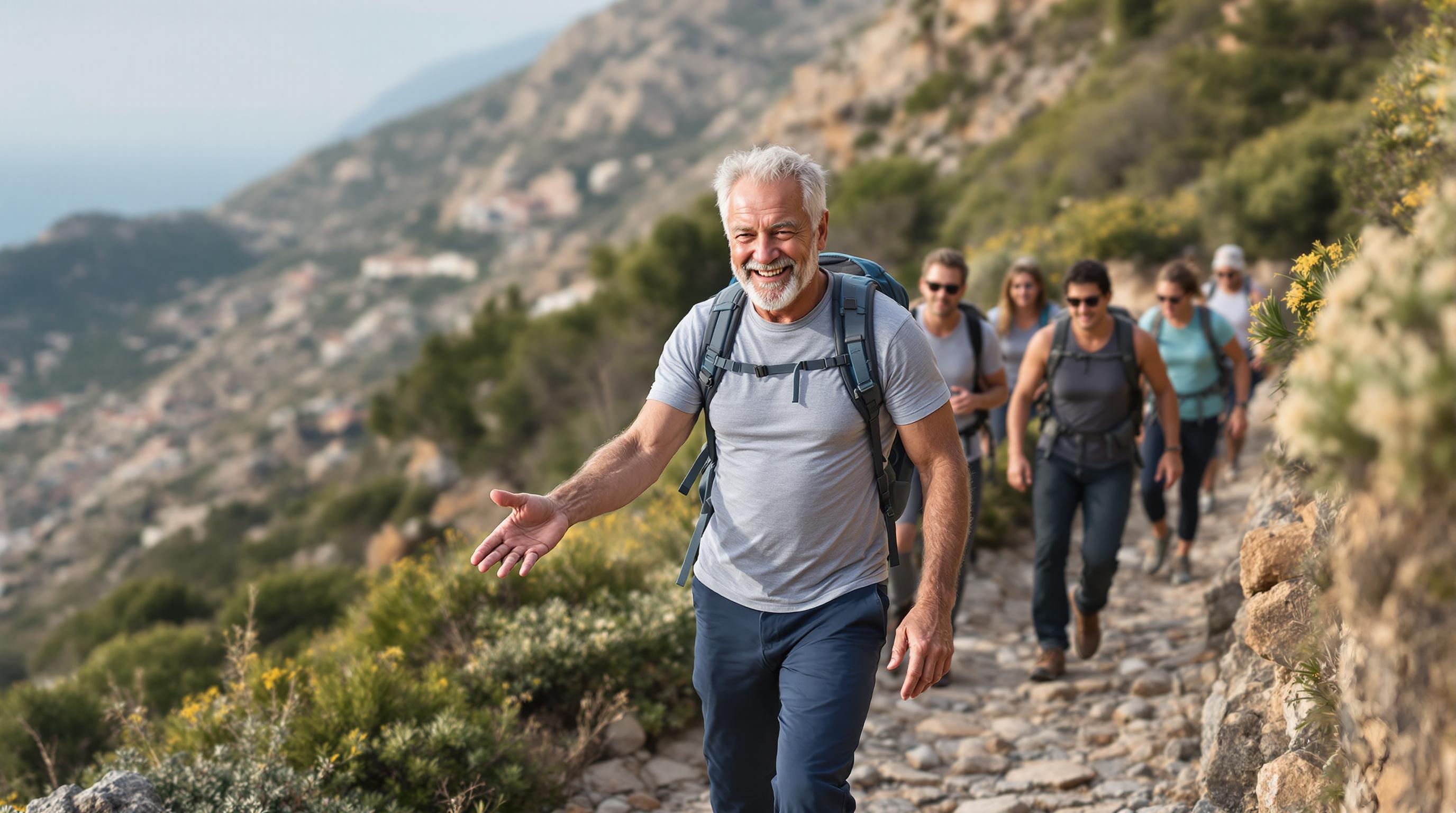Understanding longevity travel fundamentals
Longevity travel represents a revolutionary shift in wellness tourism, moving far beyond traditional spa treatments and meditation retreats. This emerging trend focuses on science-backed approaches to extending healthy lifespans through transformative travel experiences that integrate cutting-edge therapies, advanced diagnostics, and evidence-based wellness practices.
According to the Global Wellness Institute, the wellness tourism market is expected to surpass $1 trillion in 2024, with longevity-focused travel driving significant growth. Unlike conventional wellness retreats that emphasize temporary relaxation, longevity travel prioritizes long-term health optimization through comprehensive programs that may include DNA testing, biomarker analysis, and personalized treatment protocols.
As National Geographic reports, this trend has evolved from simple "rest and relaxation" to sophisticated wellness experiences that incorporate state-of-the-art technologies such as cryotherapy, ozone therapy, and stem cell treatments. The Guardian notes that travelers are increasingly willing to invest substantial amounts—sometimes exceeding £35,000—in these transformative experiences that promise to enhance both lifespan and healthspan.
This paradigm shift reflects a growing consumer demand for meaningful, life-extending experiences rather than passive vacation activities, positioning longevity travel as the future of premium wellness tourism.

Blue Zones and their influence on longevity destinations
The concept of Blue Zones has fundamentally transformed how we approach longevity travel, providing a scientific foundation for destinations that promise extended healthspan. Originally identified by researchers Gianni Pes and Michel Poulain, and later developed by National Geographic Explorer Dan Buettner, these five regions represent areas where people routinely live to 100 and beyond with remarkable vitality.
Okinawa, Japan stands as perhaps the most influential Blue Zone for modern wellness tourism. The island's centenarians attribute their longevity to ikigai (life purpose), regular consumption of beni imo (purple sweet potatoes rich in anthocyanins), and the moai social support system. Today's luxury wellness programs have incorporated these elements through purpose-finding workshops, antioxidant-rich cuisine featuring purple vegetables, and community-building activities that foster meaningful connections among guests.
In Sardinia's mountainous eastern provinces, the exceptional longevity of men has been linked to their plant-based diet, daily physical activity through shepherding, and strong family bonds. Contemporary longevity retreats now integrate these principles through guided hiking programs, Mediterranean nutrition education, and multi-generational wellness experiences that emphasize family participation.
Costa Rica's Nicoya Peninsula offers another compelling model, where natural calcium-rich water, nutrient-dense local foods, and an active outdoor lifestyle contribute to exceptional longevity. Modern wellness destinations have adopted these elements by featuring mineral-rich spring water, farm-to-table dining programs emphasizing local superfoods, and nature-based activities that promote natural movement patterns.
As Dan Buettner observed, the secret lies not in changing individual behaviors but in changing the ecosystem. Today's longevity travel destinations successfully recreate these supportive environments, combining traditional Blue Zone wisdom with contemporary luxury amenities to offer transformative experiences that guests can integrate into their daily lives long after returning home.

Modern technologies and treatments in longevity retreats
While Blue Zones offer timeless wisdom about longevity, today's luxury wellness destinations are revolutionizing the field by combining traditional practices with cutting-edge medical technologies. These advanced treatments represent a significant evolution from simple spa services to comprehensive longevity protocols that can cost tens of thousands of dollars.
At the forefront of this movement, Four Seasons Resort Maui offers what they call a "longevity protocol" - a multi-faceted approach that optimizes the body's natural healing mechanisms through cutting-edge therapies. Their program includes ozone therapy, where blood is extracted, infused with ozone, and reintroduced to the body for £964. More advanced treatments include stem cell therapy, exosomes, and NAD+ infusions, with comprehensive packages reaching £35,351.
These scientific interventions extend far beyond traditional wellness offerings. Diagnostic testing has become a cornerstone of modern longevity retreats, with facilities offering DNA testing, gut microbiome analysis, and bioimpedance assessments. Guests can undergo VO2 max testing to measure cardiovascular fitness, while comprehensive biomarker panels provide detailed insights into aging processes and metabolic efficiency.
Advanced therapeutic modalities are increasingly common at high-end facilities. Cryotherapy chambers expose guests to extreme cold temperatures to stimulate cellular regeneration, while infrared saunas promote detoxification through deep tissue warming. Hyperbaric oxygen therapy chambers deliver concentrated oxygen under pressure, theoretically enhancing cellular repair mechanisms.
The integration of biohacking technologies represents another frontier in longevity tourism. Resorts now offer intravenous vitamin infusions customized to individual nutritional deficiencies, alongside sophisticated monitoring devices that track sleep patterns, heart rate variability, and stress responses throughout guests' stays.
What distinguishes premium longevity destinations is their ability to seamlessly blend these high-tech interventions with holistic wellness practices. Traditional elements like meditation, yoga, and nutritional counseling are enhanced by scientific precision, creating personalized protocols that address each guest's unique biological age and health markers.
However, medical experts remain cautious about these expensive interventions. As Dr. Mark Loafman notes, "There isn't a single proven treatment that would prolong the life of someone who's already healthy." This skepticism highlights the importance of choosing reputable facilities that combine innovative treatments with evidence-based approaches to longevity.
Designing your perfect longevity journey
After exploring the cutting-edge treatments available at luxury longevity resorts, the next crucial step is crafting a personalized journey that aligns with your wellness goals. Planning a longevity-focused trip requires thoughtful consideration of your health objectives, preferred balance of activities, and realistic expectations for transformation.
According to wellness travel expert Samantha Lippiatt from The Wellness Travel Expert, the key lies in prioritizing a balance of rest and activity. "The goal is to create a flow between rejuvenation and adventure, which helps reset both body and mind," she explains. This approach ensures you benefit from both the restorative and energizing aspects of longevity travel.
When selecting your destination, Eliza Harris from Indagare recommends starting with your trip's primary purpose. Consider whether you're seeking stress reduction, physical rejuvenation, or cognitive enhancement. For active experiences, hiking-oriented vacations are trending, with destinations like Mount Kilimanjaro or the Camino de Santiago offering transformative physical challenges combined with spiritual growth.
Jennifer Nicole Bianchini suggests incorporating diverse wellness modalities into your itinerary. A successful longevity journey might combine nature-based activities like forest bathing in the morning with mindfulness sessions in the afternoon, followed by nutritional workshops featuring local, anti-inflammatory cuisine.
For optimal results, experts recommend including four core elements: integrated movement throughout the day, healthy local cuisine, quality sleep optimization, and meaningful social connections. A well-designed three-week program might feature diagnostic testing in week one, active therapies and experiences in week two, and integration practices in the final week.
Remember that longevity travel success depends not just on the destination, but on how well the program's components work synergistically to support your long-term wellness goals beyond the retreat experience.
The future of longevity travel
The longevity travel market is poised for explosive growth, with the Global Wellness Institute projecting the wellness tourism sector to exceed $1 trillion in 2024. This surge reflects an increasing demand for science-backed wellness experiences that go beyond traditional spa treatments.
Technology and personalization are revolutionizing the industry, with resorts now offering advanced diagnostics, DNA testing, and bioimpedance assessments alongside customized wellness strategies. These cutting-edge approaches target metabolic efficiency, brain function, and anti-aging benefits through therapies like hyperbaric oxygen and stem cell treatments.
The luxury hospitality sector is responding with ambitious new developments. Sam Nazarian's The Estate, launching in partnership with Tony Robbins, will debut longevity-focused hotels starting with a preventative medicine center in Los Angeles in 2025, followed by properties in St. Kitts, Italy, and Switzerland by 2026.
As the industry evolves, destinations are expanding beyond Blue Zones to offer scientifically-backed programming that combines ancient wisdom with modern innovation, ensuring longevity travel becomes a transformative lifestyle investment rather than a temporary escape.
